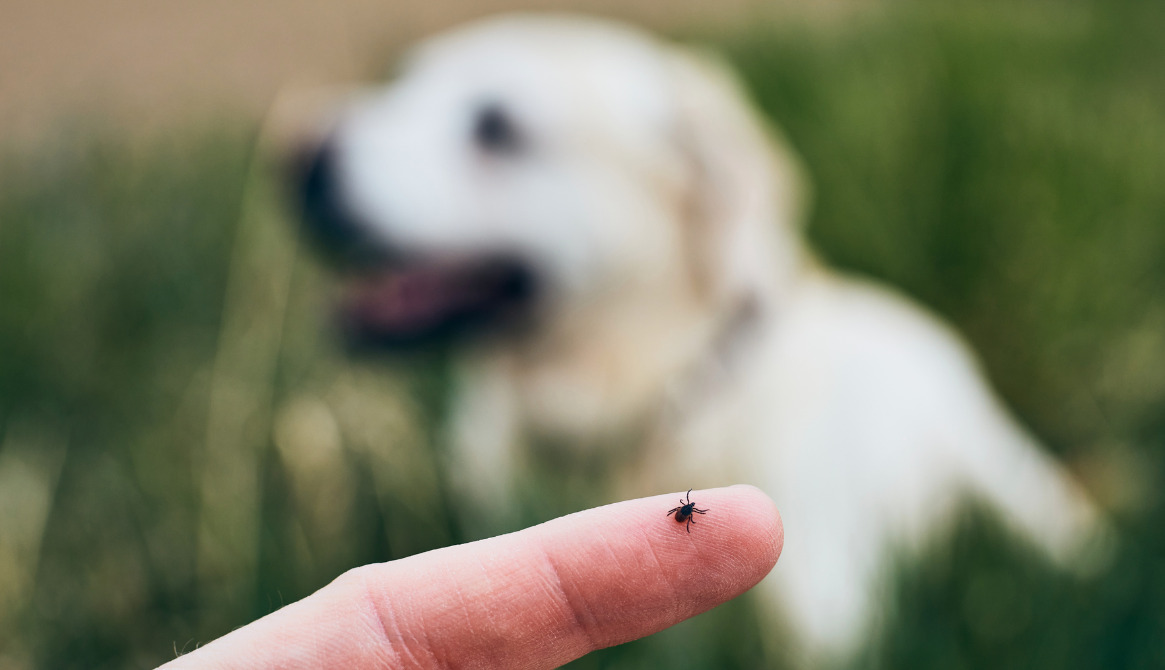With the 2022-2023 winter season being unexpectedly warm in Connecticut, there are more ticks out than usual- meaning a higher risk of contracting tick-borne diseases. At Sandweiss Tree Service, we believe it’s essential to prioritize tick control services to maintain a safe outdoor environment.
Ticks are known to transmit a range of diseases, making them a significant health concern. Our priority is to provide reliable and safe tick control services and advice to reduce the risk of tick bites and lower the chances of contracting tick-borne diseases.
The Dangers of Ticks
Tick control is crucial for protecting your loved ones and your property. Ticks are parasitic creatures. They feed on the blood of their hosts, which can include not only humans but also pets and other animals. The danger of ticks lies in their ability to spread diseases through their saliva, which can lead to a wide range of serious health problems.
Lyme disease, babesiosis, and tick-borne encephalitis are just a few of the diseases ticks can carry. Lyme disease is particularly concerning as it can lead to serious neurological damage if not treated quickly. Other potential symptoms of tick-borne illnesses can include fever, rash, joint pain, and fatigue. For the past 25 years, the DPH of Connecticut has reported an average of 2,718 cases of Lyme disease per year (with a range of 1,348 to 4,631 annually).
When it comes to pets, ticks can be especially dangerous. They can cause serious diseases like ehrlichiosis and anaplasmosis. In addition, they can cause anemia and other health problems if left untreated.
The risk of ticks isn’t limited to just people and pets. They can also have a significant impact on the environment. For one, they can potentially cause a decline in wildlife populations. Ticks are known to feed on a variety of animals, including deer, mice, and birds, all of which can be carriers of diseases. This can lead to a chain reaction in the ecosystem– fewer animals in the environment can lead to disruptions in natural food chains, productivity, and biodiversity.
Why Ticks Love Your Lawn & Trees in Connecticut
Ticks tend to thrive in moist, humid conditions with lots of vegetation to hide in, and keeping your surroundings clean and dry can help reduce their population. Keeping your property free of debris and overgrown vegetation, such as tall grass and bushes, helps reduce the population of ticks.
Another reason ticks may be attracted to your yard is wildlife- which Connecticut has a lot of. Ticks feed on the blood of animals, and they are more likely to be found in areas where their hosts live. This means that if you have deer, rabbits, mice, or other small animals in your yard, you may be attracting ticks to your property. Additionally, if you have a bird feeder or bird bath in your yard, this can also attract ticks, as birds are common hosts for these pests.
By taking steps to reduce the amount of wildlife, vegetation, and moisture in your yard, you can make your property less attractive to ticks and reduce your risk of getting bitten. This may involve pruning back bushes and trees, raking up leaf litter, and removing any standing water in your yard. You can also invest in proper tick control and tree and lawn care services from a company like Connecticut-based Sandweiss Tree Service to ensure your safety.
With these measures in place, you can enjoy your yard without worrying about pesky ticks.
Tick Control Methods
There are several ways to get rid of ticks and prevent them from invading your property and harming your family, friends, and pets.
Physical barriers include simple actions such as wearing long sleeves and pants or tucking your pant legs into your socks while spending time outdoors. Similarly, using insect repellents on exposed skin is an effective way to reduce your risk of tick bites. These measures are entirely natural and safe for humans and pets alike, making them an ideal first step in tick control.
One of the most common and effective methods of tick control is by using chemicals such as acaricides, which kill ticks on contact. These chemical treatments typically come in the form of sprays or powder and are sprayed directly onto areas where ticks are likely to live, such as tall grass or leaf litter. While effective, these treatments contain chemicals that can be harmful to humans and animals if used improperly, and they may not be suitable for all environments.
Another option for tick control is the use of biological controls, such as nematodes, which are tiny worms that eat ticks and other pests. Nematodes can be applied to your lawn in much the same way that chemicals are applied, and they work to reduce the tick population over time. Biological controls are safe for humans and pets and can provide long-lasting protection against ticks and other pests.
Safe Tick Control with Sandweiss Tree Service
At Sandweiss Tree Service, we pride ourselves on our tick control programs. Our approach is guided by the recommendations and guidelines of the Connecticut Agricultural Experiment Station and Department of Environmental Protection. Our focus is on using ecologically sound practices, such as utilizing horticultural oils and biological controls that are compatible with tree health.
Trust us to keep your Connecticut property and loved ones safe from these disease-carrying pests while preserving our environment. Contact us today for a free quote and start enjoying the outdoors worry-free!

